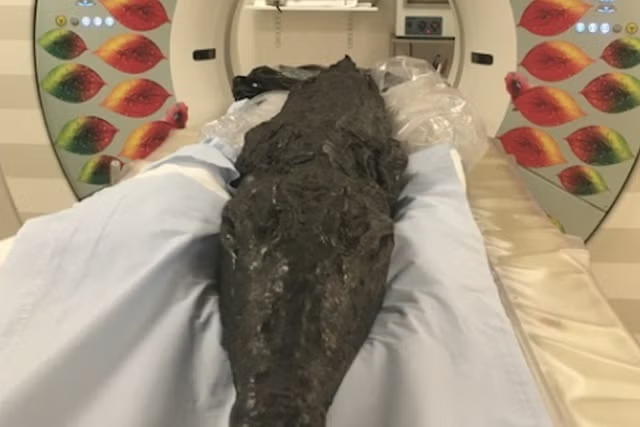A massive explosion on the surface of the sun is expected to cause auroras on Mars, and they will look nothing like the northern and southern lights we see on Earth.
Sunspot AR3738, a huge and volatile sunspot on the sun's surface, just spat out a powerful X1.9-class solar flare on July 16, sending a plume of solar plasma shooting out into space.
This coronal mass ejection (CME) won't hit the Earth—where it could cause a geomagnetic storm and subsequent northern lights—but will instead collide with Mars, possibly triggering auroras there instead.
When coronal mass ejections hit the Earth, they collide with our magnetic field, which acts like a shield around most of our planet, causing a geomagnetic storm.
Some of this plasma is ferried along the magnetic field lines toward the north and south poles, where they interact with the ionosphere layer of our atmosphere.
Gases in the atmosphere like nitrogen and oxygen are excited by the solar particles, causing them to release light at specific wavelengths. Oxygen atoms emit green and red light, while nitrogen atoms emit blue and purple light.
"When people see these "curtains of light"—they are looking up into a particle beam formed by the Sun's interaction with the Earth," Craig Underwood, an emeritus professor of spacecraft engineering at the University of Surrey in the U.K., told Newsweek.
Mars, on the other hand, doesn't have a magnetic field quite like ours, instead possessing several smaller umbrella-shaped fields that appear to emerge sporadically.
"Mars has no global magnetic field, like the drawings of a magnet lined up with Earth's poles. Magnetic fields are made deep in the molten metal cores of planets as they spin and churn. Mars is much smaller than Earth, so its interior has already cooled off and it can't create a magnetic field," Nick Schneider of the University of Colorado's Laboratory for Atmospheric and Space Physics (LASP), previously told Newsweek.
Mars can therefore experience auroras not just at its poles like Earth, but across the entirety of the planet, as the solar particles in a CME can collide with its sparse atmosphere all at once.
"Earth's strong magnetic field protects the planet when violent solar activity blasts energetic particles through the solar system. But Mars lacks that protective 'bubble,' so those energetic particles bombard the planet everywhere. The whole night sky lights up, especially at the current level of activity at 'Solar Max.' Some particles can penetrate the atmosphere so deeply is could be a hazard to future astronauts," Schneider said.
Images taken by NASA's MAVEN (Mars Atmosphere and Volatile Evolution) spacecraft in orbit around the planet show the Martian aurora as a purple glow, as they are a false-color version of the aurora's ultraviolet light. However, to an observer on the planet's surface, it would likely appear green.
"We can confidently predict that Mars aurora will glow green, based on extensive studies the aurora at ultraviolet wavelengths by the MAVEN spacecraft. There's just enough atomic oxygen at the top of Mars' atmosphere to appear the same color as green aurora on Earth. No camera sent to Mars so far has adequate "nighttime settings," but we're working to get better cameras on future missions—a smartphone camera would work well enough!" Schneider said.
Do you have a tip on a science story that Newsweek should be covering? Do you have a question about Mars aurorae? Let us know via science@newsweek.com.
Disclaimer: The copyright of this article belongs to the original author. Reposting this article is solely for the purpose of information dissemination and does not constitute any investment advice. If there is any infringement, please contact us immediately. We will make corrections or deletions as necessary. Thank you.



